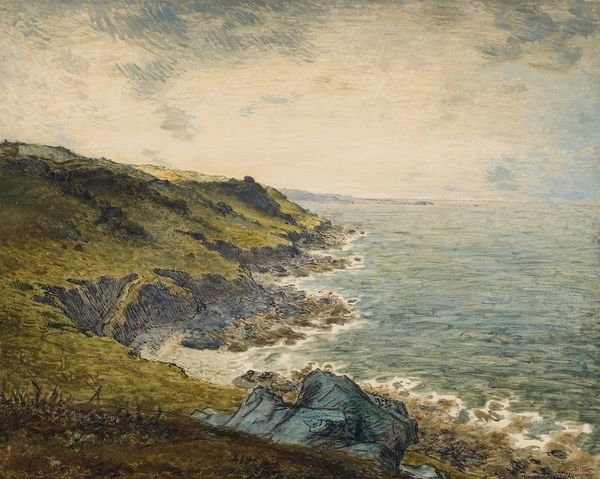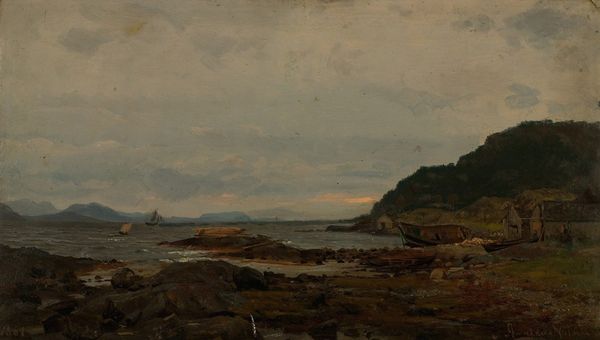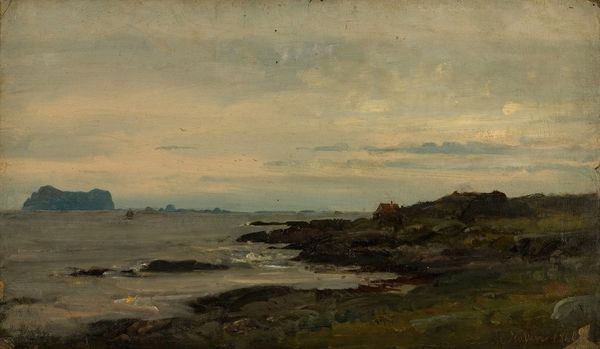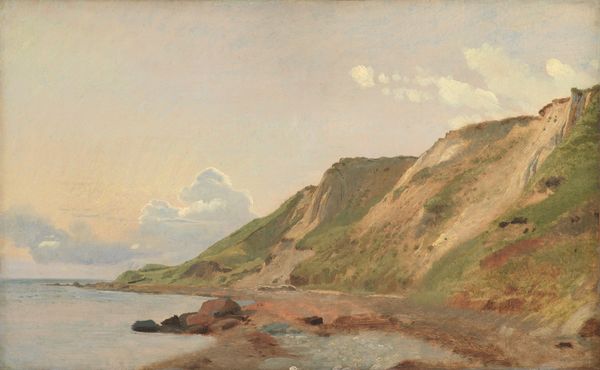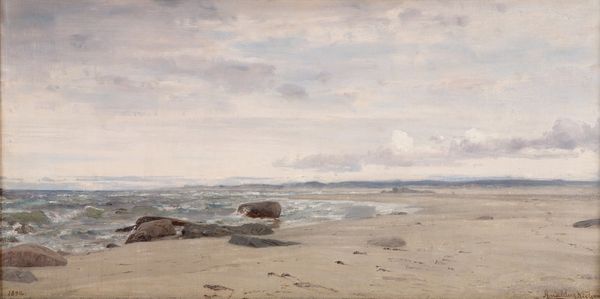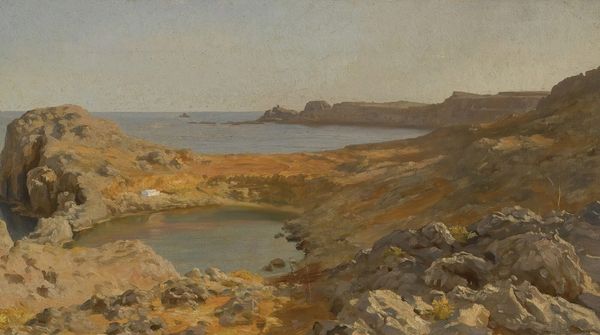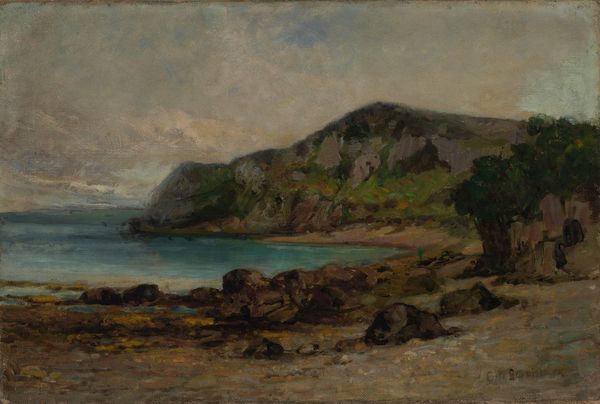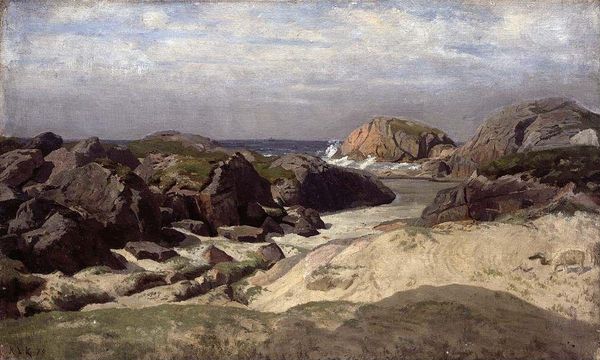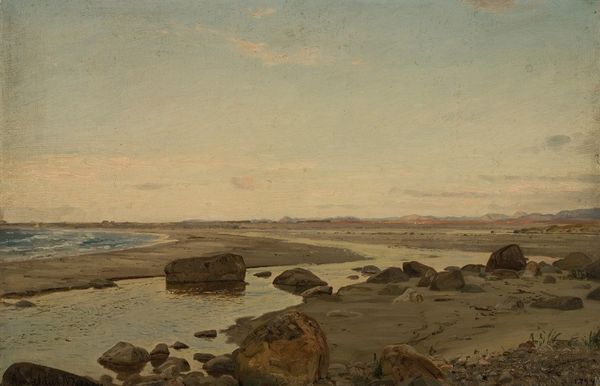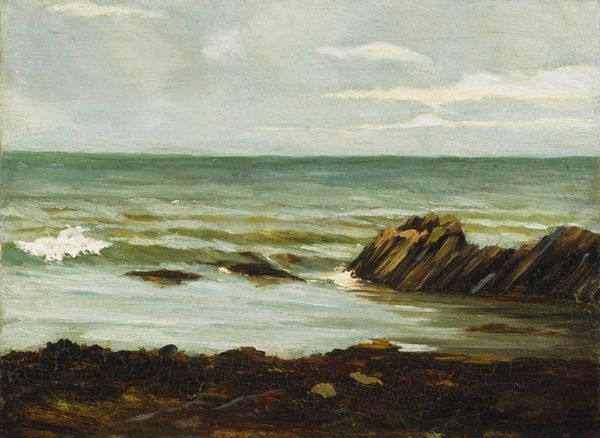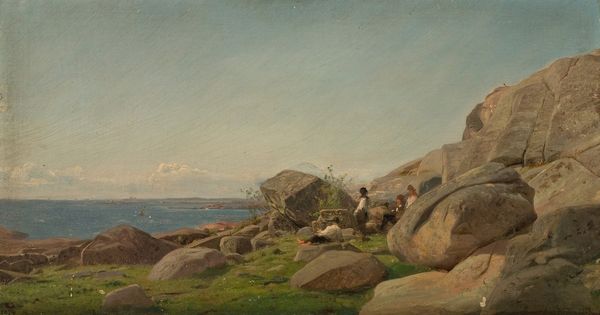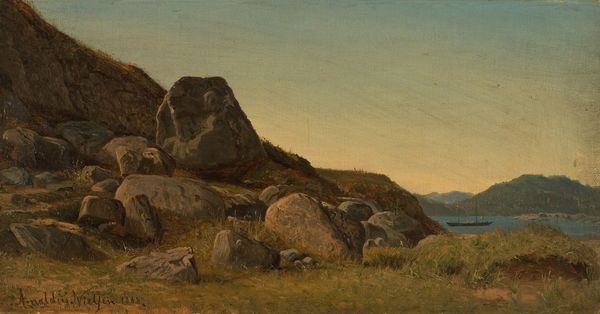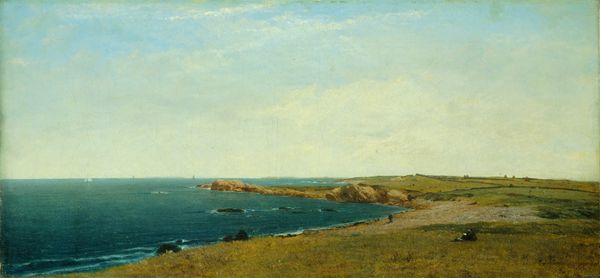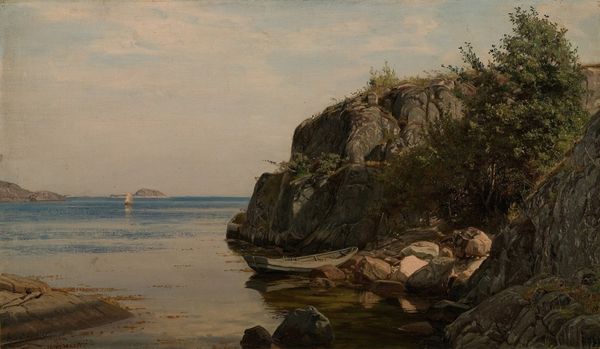
Dimensions: 45 cm (height) x 66.5 cm (width) (Netto), 61.1 cm (height) x 82.3 cm (width) x 6.7 cm (depth) (Brutto)
Curator: Let's discuss Janus la Cour's "Strandparti ved Helgenæs," created in 1877. The work, rendered in oil on canvas, captures a serene coastal scene. Editor: My initial impression is one of melancholy. The subdued palette, dominated by grey and muted greens, evokes a sense of solitude and the power of nature. Curator: Precisely. Note how La Cour meticulously organizes the composition, dividing the canvas into distinct horizontal layers: the foreground's rocky beach, the turbulent sea, the rolling hills, and finally, the expansive sky. This stratified approach reinforces the structure and stability. Editor: And yet, the boulders scattered across the beach—these appear as primal, timeless forms. Don't they remind you of similar arrangements in other coastal depictions of that era, echoing a deep connection to nature's enduring power? Curator: A fascinating interpretation. But what about the brushwork? Notice the varied textures; from the impasto of the waves to the smoother, blended strokes used to depict the sky. The artist employs a variety of strokes that engage a formal interplay of contrasting elements. Editor: It does. And these textural variations also amplify the emotional resonance. Consider the sky – it seems to weigh heavily on the landscape below, laden with unseen narratives. There’s something profoundly Scandinavian here: a wrestling with forces, both physical and internal. Curator: Interesting. However, it is crucial to acknowledge the overall chromatic harmony. La Cour has mastered a nuanced blending of earth tones and blues, evoking atmosphere in his construction of pictorial depth. Editor: But don’t you think these stylistic choices invite one to examine recurring cultural attitudes, those that express nature as a site for both tranquility and formidable struggle? The boulders aren't merely rocks; they’re anchors in a historical landscape. Curator: Indeed, considering his artistic choices, it would seem to invite closer consideration of both form and emotion. Editor: In contemplating these different perspectives, our dialogue only enriches and illuminates the rich symbolism woven within the composition itself.
Comments
No comments
Be the first to comment and join the conversation on the ultimate creative platform.
